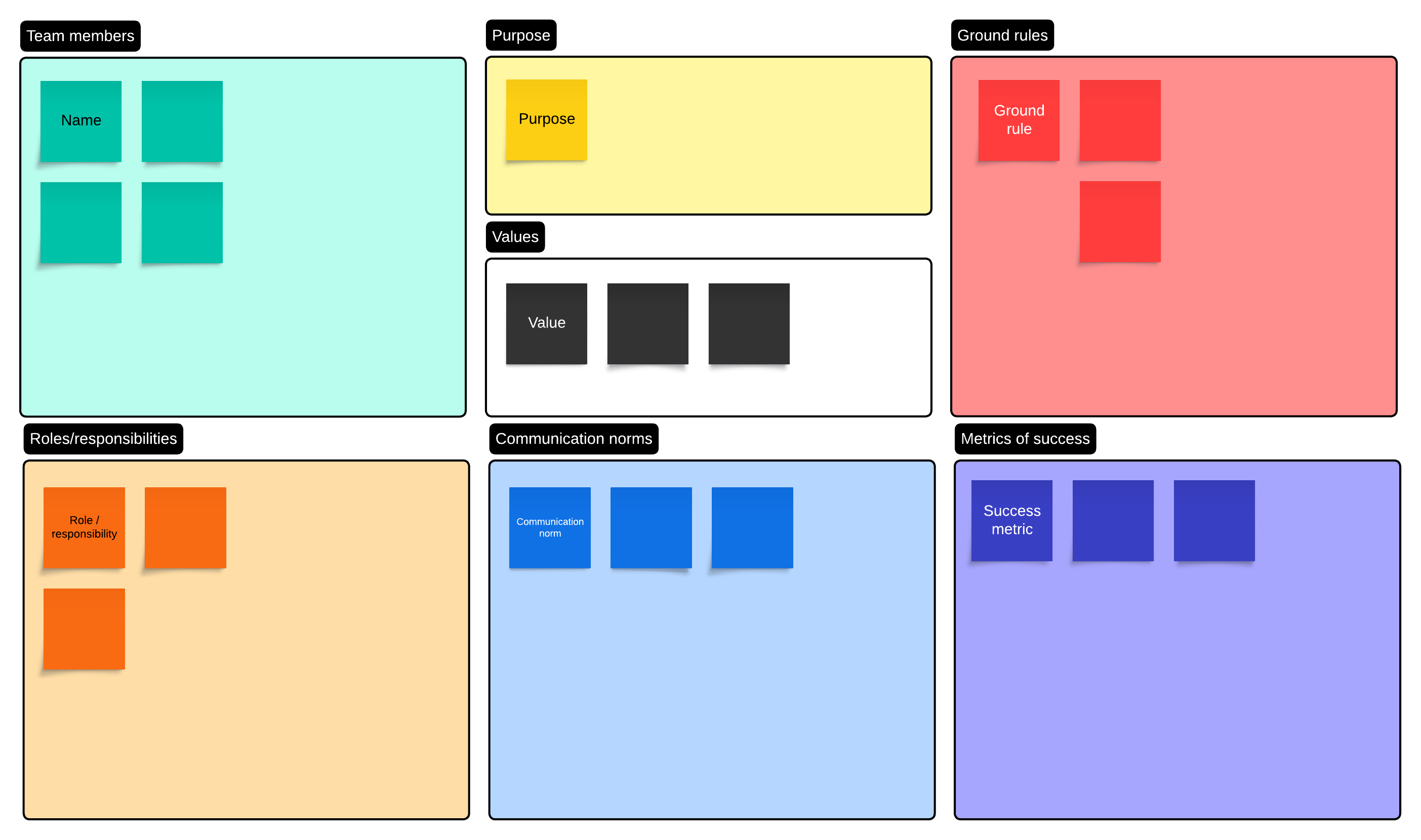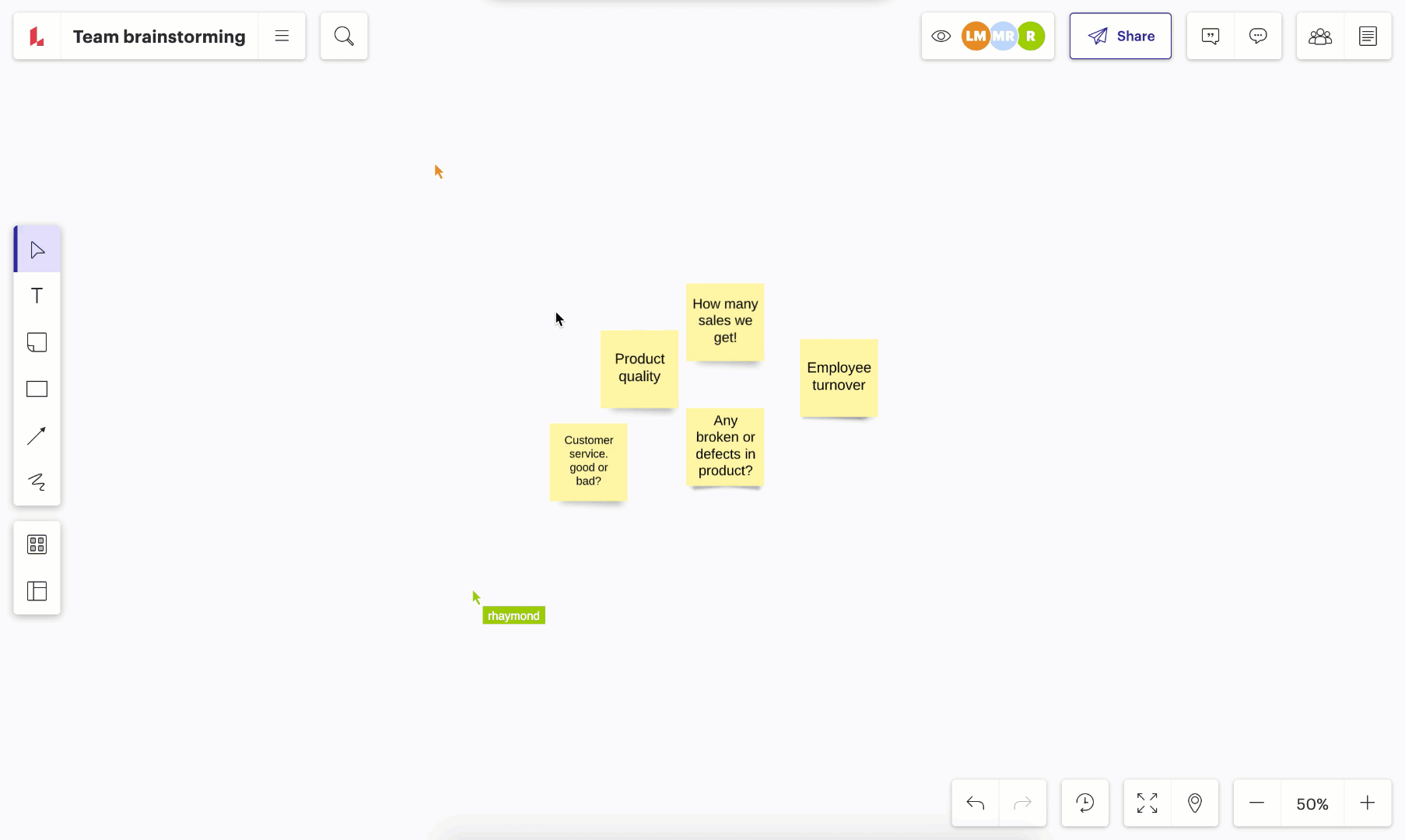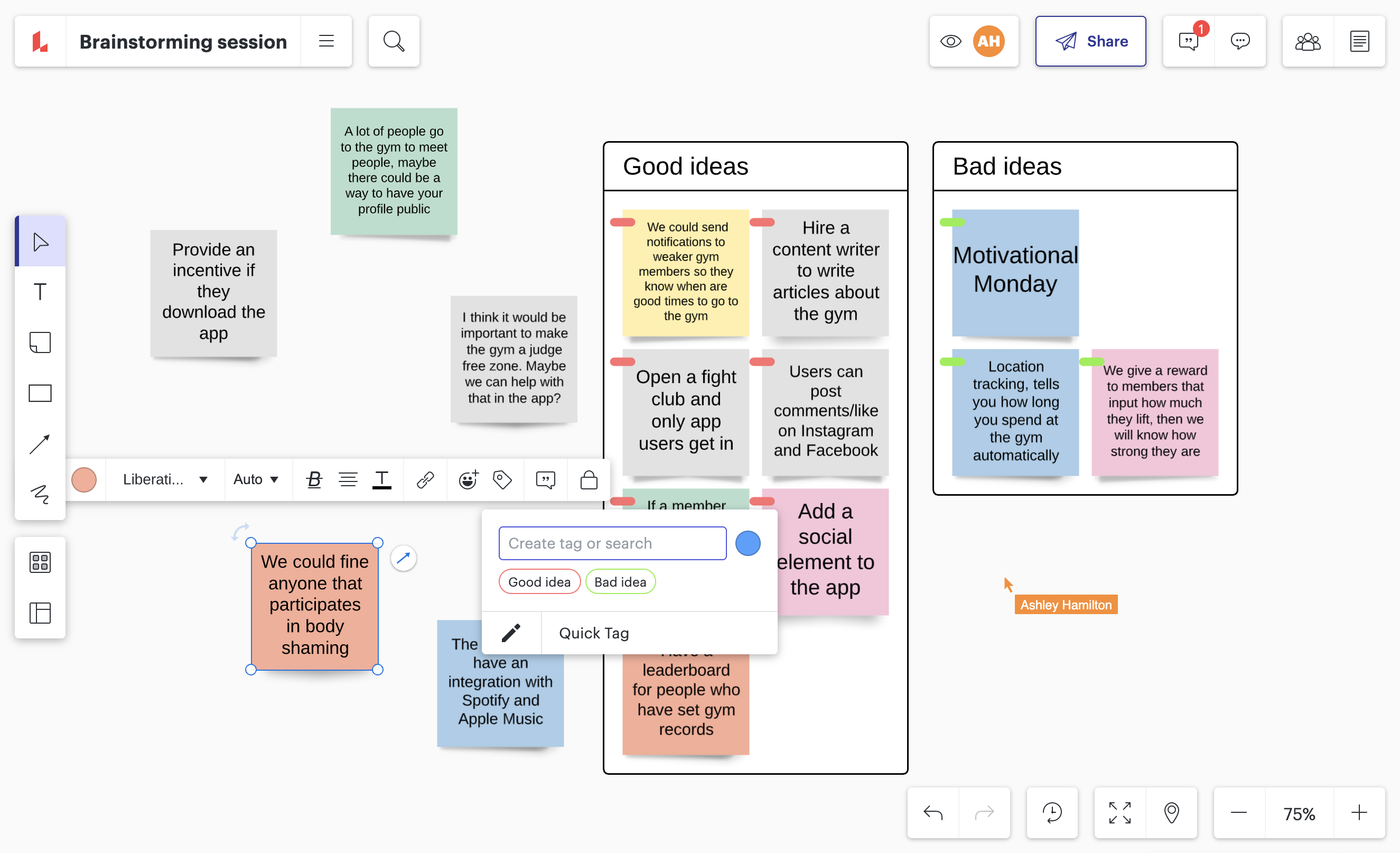
How to promote collaboration equity in your organization
Reading time: about 15 min
Topics:
We’ve spent the past several years collectively redefining the workplace. The pandemic corralled us into our home offices, challenging our status quo. People across the world realized that there was more than one way to work.
Then, businesses re-opened their doors. Rather than returning to offices straight away, many organizations adopted a hybrid model.
These working models have prompted organizations to explore what it means to make collaboration equitable for everyone. Beyond challenging the definition of where we work, we’re also thinking deeper about how we work.
So, we sat down with our own evangelists, Bryan Stallings and Jessica Guistolise, who both have years of facilitation and coaching experience. They shared their expertise to help us understand how we can navigate this landscape and better promote equity in the workplace.
What is collaboration equity?
Collaboration equity is when all participants have the ability to contribute and communicate equally. So, employees have the same opportunity to contribute and participate, regardless of if they:
- Work in-office
- Work remotely
- Have different collaboration styles
- Are neurodivergent
- Have different roles
- Are at varying levels of seniority
On the importance of this conversation in the modern workforce, Guistolise said:
“If we don’t pay attention to this issue, we will get less and less input from those individuals feeling disconnected, whether from their team or the organization at large.”
Stallings shared a personal experience that reignited a passion for this topic:
“I’ve had recent experiences of feeling overlooked and marginalized when joining a meeting remotely, and it created a brand new sensitivity in me that I hadn’t experienced since before COVID when it seemed like everyone was in person.”
While the continual rise of hybrid work brings this conversation to the forefront, it’s not the only contributing factor. It’s important to recognize the collaboration anti-patterns that hold organizations back, which include factors such as deferring to the highest-paid person’s opinion (HiPPO).
Google’s three pillars of collaboration equity
In 2022, Google was one of the many organizations trying to figure out the hybrid work model. That initial intention evolved into an important realization: There was a drastic need to define equitable collaboration in the workplace.
So, Google created three pillars to define collaboration equity:
- Representation equity: Employees are seen, heard, and portrayed equally.
- Participation equity: Employees can host, present, and participate equally, regardless of location or preferred ways of collaborating.
- Information equity: Employees have equal and convenient access to documentation and context, including social and cultural information (such as water cooler talk before a meeting if joining virtually).
What do the pillars reveal about the nature of collaboration equity?
Collaboration equity isn’t a single action that can be performed and pushed aside. There are many elements to consider, and regardless of how organizations choose to define this concept for themselves, it’s clear that we need to be intentional about implementation.
Collaboration equity is incredibly relevant today, and all organizations should consider how to define and implement it for themselves. At Lucid, we’re looking at this from a broader lens and going beyond the question of hybrid work (though it’s certainly an important piece). We’re asking why collaboration equity matters to every part of modern organizations.
Why does collaboration equity matter?
If you aren’t collaborating equitably, you aren't achieving the full potential of people, teams, and organizations. In an inequitable working environment, employees may feel dissatisfaction and frustration. They might feel that their organization doesn’t value their input or talent or doesn’t care enough about them as an individual to facilitate their communication.
Undervaluing your people can lead to steep consequences for organizations. Employees who don’t feel empowered to speak up and believe their input is inconsequential or undervalued may see their well-being, potential, and productivity suffer. In these cases, companies can see increases in quiet quitting, culture destruction, and loss of talent.
Creating an equitable and collaborative working environment requires proactive, consistent effort. Organizations that prioritize their people first will see improvement all the way around. Employees who are empowered, motivated, valued, and heard do their best work. They participate in meetings, work better with colleagues, innovate more easily, and allow their creative ideas to flow.
Collaboration equity is a key part of high-value collaboration, a concept we’ve written about before. High-value collaboration happens when organizations focus their collaboration efforts on activities that advance innovation, tangibly contribute to business goals, or improve important processes.
Without collaboration equity, high-value collaboration isn’t possible. Organizations need to recognize the critical role of collaboration equity in establishing an inclusive culture where employees feel empowered to contribute effectively.
The current state of collaboration equity: 5 challenges organizations face
More organizations than ever are looking for ways to cultivate a stronger, more collaborative culture. But that’s not always an easy task. We talked with Stallings and Guistolise to learn more about the challenges organizations face today when creating inclusive workplaces.
1. Culture
Leaders may go into the collaboration equity conversation looking for quick fixes and implementations. The truth is that collaboration equity is a much larger and much more important concept, and it requires constant attention and effort. It’s a principle that companies have to work to embed into their lasting culture.
Guistolise insists that collaboration equity must be part of an organization’s culture to be effective. But changing culture is a large, org-wide shift, which can be a huge challenge. It requires awareness, time, and accountability to execute. You also need the right tools to support the shift.
2. Awareness
Organizations need greater awareness of collaboration equity. Stallings told us, “The collective awareness of collaboration equity exists on a spectrum. We find some organizations really prioritize it, and many don’t.”
As leaders begin approaching this conversation, it may be helpful to highlight the fact that collaboration equity is not a new concept. Making the issue familiar can help establish greater awareness within an organization.
Guistolise emphasizes this truth by pointing out the discrepancies that dispersed workers have experienced for some time now. “This isn’t a brand new problem brought on by what we now think of as hybrid work,” explains Guistolise. “We’ve been global for a long time, and there has long been an othering of individuals in different time zones and different countries.”
Stallings also pointed out that Agile teams in particular, have been sensitive to this topic for a while. He recalled, “In the days before video conferencing, we kept framed photographs of any team members who customarily called into a meeting near the conference phone. That way, they were more than just a voice.”
Calling out the existing scenarios where collaboration equity has historically been relevant can help increase awareness. From there, it’s a matter of continually educating employees on how our modern workplaces must shift to prioritize equitable collaboration.
This conversation alone stands as an example of why organizations must continuously and proactively address collaboration equity—it’s an ever-changing concept as our working methods evolve.
3. Time
“Prioritizing collaboration equity takes more time,” said Stallings. “This is often why some individuals push it to the side. In today’s fast-paced world of video cameras and digital whiteboards, we do need to establish the safety necessary for collaboration equity rather than just assume that it’s already there.”
Today, it might be easy to simply spin up a meeting and jump right to the agenda or the work instead of taking the necessary steps to ensure equality of participation and collaboration. If individuals view collaboration equity as too time-consuming to prioritize, it will be impossible to cultivate in a workplace.
4. Tooling
In a world of hybrid collaboration, tech stacks have become more important than ever. But that doesn’t mean everyone has equal access to them. Guistolise asked an important question: “Are we providing the same tools to everyone so we can all collaborate in the same way? In my experience, no.”
If in-person and virtual team members work with different tools, it creates a disadvantage. Team members might not have the same access to information or be unable to contribute equally in meetings. For example, if those in-person collaborate on a physical whiteboard, virtual attendees can’t easily see or add their thoughts.
Plus, not everyone collaborates in the same way. Some collaborators need space to ideate before a meeting, complete pre-work, or review a meeting agenda. Others prefer a way to diagram and brainstorm live during a meeting. Is your organization providing tools that accommodate different collaboration styles and preferences?

Guide to digital-first collaboration
Increase collaboration equity and level the playing field with digital-first collaboration.
Learn more5. Accountability
Determining who’s accountable for maintaining an equitable collaboration experience can be difficult, and a major pain point for some organizations. Some individuals, such as facilitators, are well-positioned to make an impact and create more equity.
Stallings explained the unique role of the facilitator:
“You especially become accountable for collaboration equity as a facilitator. I think of it as though I’m hosting people in my home: How do I make sure they’re comfortable? How do I make sure they know where everything is? Then I ask myself, ‘How can I do that for people in my meetings?’”
But collaboration equity goes beyond meetings. There’s asynchronous collaboration and daily communication to consider, as well. Creating a shared sense of responsibility across an organization is challenging because it may represent a new way of thinking.
How to promote equity in the workplace: 5 best practices to follow
So, how should leaders or team members promote collaboration equity? There is no straightforward walkthrough—but we’ve boiled it down to five must-haves.
1. Make hybrid meetings inclusive
For a while, we were all represented as the same size box on a virtual meeting window. Now, with some employees back in the office, that perspective is distorted. Some team members might be on a giant monitor in a conference room. For those remote individuals, team members in the office will appear in tiny boxes on their screens.
This situation creates an uncomfortable discrepancy. So, how do you solve this problem?
At Lucid, we’ve found that when everyone joins a meeting from their own device (regardless of whether they’re in-office or virtual), it's a much more equitable experience.
Another tip reminiscent of our WFH days is camera-on culture. We’ve found that encouraging team members to turn their cameras on whenever possible keeps us more engaged and connected. And while we keep our microphones off in a big group, keeping them on in smaller groups can encourage a more natural flow of conversation.
As we discussed, there also needs to be increased consideration for employees in different time zones and/or who work in other countries. It’s not just about in-person vs virtual.
Guistolise explains:
“It’s important to create an environment where you aren’t asking people to be working at midnight. Instead, you’re finding overlap points where everyone’s brains are turned on.”
Meetings are just one piece of the puzzle, though—especially considering that remote workers can easily experience virtual meeting fatigue! Organizations need to consider asynchronous collaboration methods, too. By accommodating asynchronous work, you make it much easier for dispersed team members to participate, even if a meeting occurs outside their working hours.
Async collaboration removes location, time, and often collaboration style barriers that can make participation more accessible and equitable.

How to improve team collaboration without another meeting
Check out our guide to asynchronous collaboration to learn some best practices and get actionable tools to aid the process.
Read now2. Accommodate different collaboration styles
Just like we learned during the pandemic that there’s more than one place to work, it’s time for organizations to realize there’s more than one way to work.
Lucid conducted some original research on how people collaborate. Our findings have informed our own awareness and sensitivity to this topic ever since.
Guistolise gives this example:
"We don’t all collaborate in the same way. I’m a relational collaborator, for example. That means I want to get to know my colleagues in order to feel like I can do my best work.”
Contributing to a shared virtual whiteboard is also helpful for those with specific collaboration styles. Some people may not feel comfortable brainstorming aloud in a big meeting. Instead, they may feel more comfortable sharing after they’ve had a chance to write their thoughts down. For those who want to make visual connections during ideation, a virtual whiteboard also facilitates that.
Our research found that people generally resonate with one of three collaboration styles. 57% of our survey respondents self-identified as an expressive, relational, or introspective collaborator. There are a few things you can do to accommodate each of these collaboration styles:
- Introspective collaborators: Allow time for pre-work or space to ideate independently before joining the group discussion.
- Relational collaborators: Carve out time at the beginning of meetings to connect personally with your collaborators before diving into the content.
- Expressive collaborators: Provide lots of creative freedom, the ability to make visual connections, and time to riff off the cuff with collaborators during meetings.
In each meeting, you may have different styles. So, the choices you make as a facilitator or leader to engage all individuals will help ignite the creativity and collaboration of every person.

What’s your collaboration style?
Find out if you’re an expressive, relational, or introspective collaborator. Then, download our full report to learn more about our findings.
Take the quiz3. Create working agreements for accountability
Working agreements have been an important part of team culture for some time now. But have you updated yours to reflect the nuances of hybrid collaboration or collaboration styles?
Creating a working agreement ties directly into the accountability challenge we discussed earlier. People often express frustration with workplaces that lack a clear sense of accountability to create equitable experiences. While executives might be the first place to look, fostering a truly inclusive workplace is a group effort.
That’s where your working agreement comes into play. A working agreement helps teams get on the same page about their norms, such as not muting the microphone before a meeting so everyone gets the same social context.
Remember, it’s only finalized when everyone on the team agrees to it. Getting buy-in from everyone enables broader accountability.

As Stallings said: “Whatever your team norms are going to be, make sure you define them and put them to use.”
4. Use a visual collaboration platform
As experts in using visual collaboration software to unite people and encourage effective collaboration, we’ve seen firsthand the enormous impact it can have org-wide—including on our own team and from our customers.
That’s why we recommend a visual collaboration platform as the best way to unite team members across working locations, time zones, collaboration styles, and seniority levels.
Here’s an example of how visual collaboration can promote greater collaboration equity:
When most of the team is in person and collaborating on a physical whiteboard, it might be challenging for virtual attendees to see what’s being written down. And, there is no way for those who are virtual to contribute to that physical whiteboard.
You can use a virtual whiteboard and solve this problem immediately. Everyone has access to the same technology, works in the same space, and has equal access to information.

Enabling several pathways to participation means that your organization can support the valuable and diverse perspectives of your entire team. As Stallings said in our recent article on upcoming visual collaboration trends:
“With increased diversity of thought, we don’t want to miss out on the valuable thoughts of those we do hire! This means if someone needs to pick up a kid from school, they can ‘join’ the meeting asynchronously to add their ideas to a visual thought process. Team members on the other side of the world can now participate in valuable conversations when their brains are turned on, rather than having to stay up or wake up in the middle of the night.”
5. Make information visible to everyone
Whether people work in-office, remotely, or have different collaboration styles, they need equal access to information. Knowledge silos prevent teams from accomplishing tasks efficiently, slowing down progress toward shared business goals.
Using a visual collaboration platform makes this easy. You can centralize your documentation, presentations, and collaboration in one place. Creating a single source of truth in a visual collaboration platform means that everyone will have access to all information all the time. It also means everyone can participate (even asynchronously!).
Collaborative note-taking is a great example of how making information visible can benefit everyone. Each person will catch different things during the meeting, which broadens the collective point of view.
Stallings said of collaborative note-taking:
“I love collaborative note-taking in a virtual space. That way, everyone can be writing out an outline or a mind map of what the team is discussing. It’s so powerful. There are other benefits, too. Collaborative note-taking lets facilitators see that everyone is engaged and keeps participants focused on the topic.”

Empower collaboration equity in your organization
With increased awareness, organizations can ensure that all team members—regardless of location, working style, neurodivergence, or seniority—have an equal opportunity to contribute and communicate.
By embracing and implementing this concept as a key pillar, organizations will pave the way for a future where workplaces thrive on innovative and inclusive collaboration.

Check out our guide to hybrid meetings
Learn how to facilitate legendary hybrid meetings with our free guide.
Download nowAbout Lucid
Lucid Software is the leader in visual collaboration and work acceleration, helping teams see and build the future by turning ideas into reality. Its products include the Lucid Visual Collaboration Suite (Lucidchart and Lucidspark) and airfocus. The Lucid Visual Collaboration Suite, combined with powerful accelerators for business agility, cloud, and process transformation, empowers organizations to streamline work, foster alignment, and drive business transformation at scale. airfocus, an AI-powered product management and roadmapping platform, extends these capabilities by helping teams prioritize work, define product strategy, and align execution with business goals. The most used work acceleration platform by the Fortune 500, Lucid's solutions are trusted by more than 100 million users across enterprises worldwide, including Google, GE, and NBC Universal. Lucid partners with leaders such as Google, Atlassian, and Microsoft, and has received numerous awards for its products, growth, and workplace culture.
Related articles
Understanding the 3 collaboration styles—and how they can work better together
Explore the three common collaboration styles—introspective, relational, and expressive—their natural areas of tension and common ground, and resources to help them work best together.
[Guide] How to set up your hybrid workplace to maximize collaboration
Every team is a hybrid team. Learn how to set up your hybrid workplace with the right office design and culture to maximize collaboration.
A facilitator’s guide to meeting equity
Conducting an equitable meeting requires preparation. Learn more about how to facilitate meeting equity in this article.
Ideating with introverts at work: Silent brainstorming and other techniques
Explore brainstorming tips that ensure everyone has an equal chance to collaborate in an ideation session.
